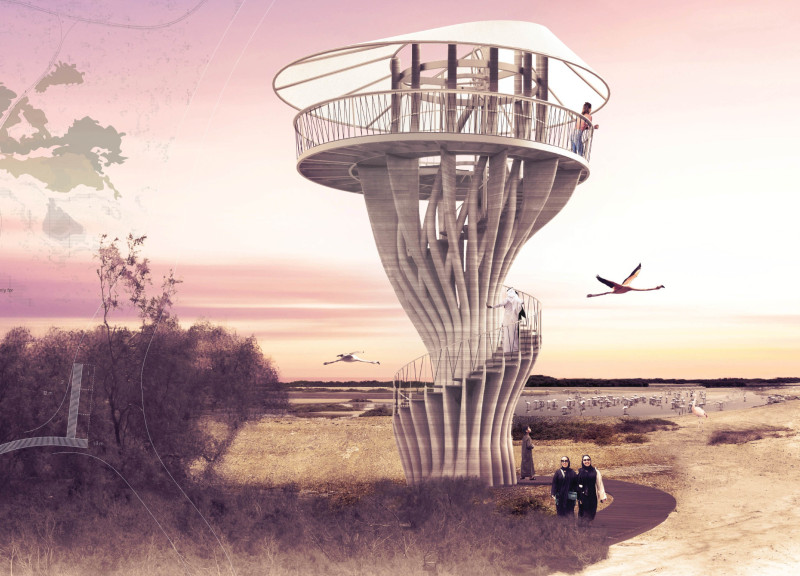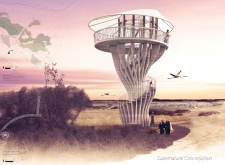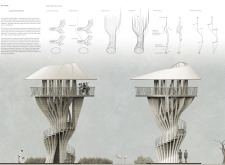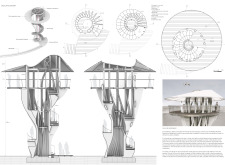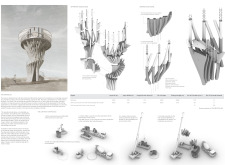5 key facts about this project
The tower is located in the Al Wathba Wetlands Reserve, designed to connect visitors to the natural landscape. It functions as both an observation point and a pathway, inviting exploration and engagement with the environment. The central feature is a staircase that serves as the heart of the tower, guiding movement and promoting a sense of flow throughout the space.
Concept and Structure
The design is inspired by the movement of sand, taking the form of a vertical structure that resembles a spiral. This architectural concept incorporates a branching system that reinforces its organic nature, allowing the building to resonate with the desert setting. The interaction between solid elements and empty spaces is pivotal, creating a porous structure that encourages light to filter in and provides views of the surrounding landscape.
User Experience
The experience for visitors is a significant focus in the design. Access is gained via a walkway, where a choice between stairs and a manual elevator exists. This arrangement supports easy navigation while allowing visitors to witness the shift from darker spaces to brighter views. Upon reaching the observation platform, visitors are met with expansive vistas of the wetlands, enhancing the relationship between the tower and its environment.
Materiality
Construction relies on advanced 3D printing techniques, with components made in sections of 2.5 meters. Concrete is used for its durability, while steel features in key structural parts, including the observation platform and elevator. A wood composite is utilized for walkable areas, adding strength and sustainability to the overall design.
At the top of the tower, the observation platform provides a space that blends with the natural surroundings. Light streams through carefully placed openings, offering both protection from the elements and a connection to the outdoors. This attention to detail creates an inviting atmosphere, allowing visitors to fully engage with the beauty of the wetlands.


